Celebrating Christmas in Crete
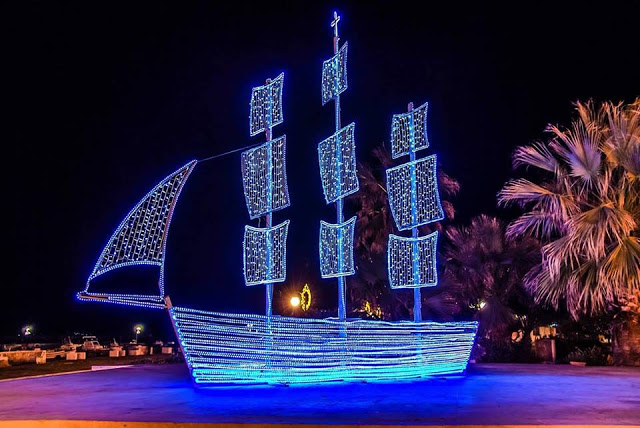
In this article, we will travel from one end of Crete to the other showcasing why celebrating the Christmas Holidays in Crete is original. Celebrating Christmas Holidays in Crete is special as each town on the island has its unique customs and traditions.
Crete is an all-year-round destination that becomes even more welcoming during the Christmas holidays. We hope that you enjoy this festive and inspirational article, and we cannot wait to greet you on this holy island!
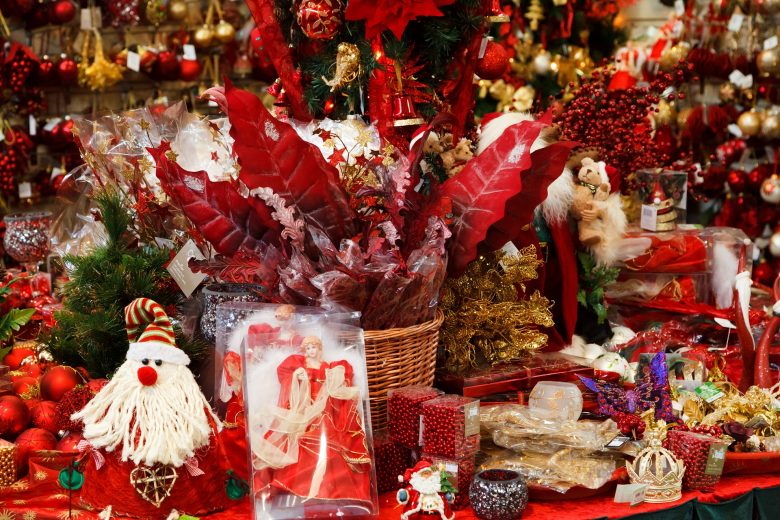
Chania – Crete
The most wonderful time of the year, where colors flow all around the city and people just can’t stop smiling. It is usual to find people in and out of stores, shopping for presents for their loved ones, and having a cup of hot chocolate in between. The town of Chania turns into one big festive town full of fun events for families and friends of all ages. The huge Christmas tree decorates the old town’s square surrounded by the beautiful Venetian Mansions and the Mosque of Küçük Hasan. You can hear the carolers singing the Christmas carols spreading the Christmas spirit all around the town!
Giving gifts is one of the most important Christmas traditions. By taking the time to buy a present for a loved one is one of the ways people express their affection. However, each family has their own traditions when it comes to opening the gifts. Some families wake up bright and early on Christmas morning, sit by the Christmas tree, and start exchanging gifts. Afterward, they will prepare a huge breakfast full of sweet and savory plates and lots of hot beverages, all while listening and dancing to Christmas music. On the other hand, some families in Greece wait until New Years‘ to open up all their presents from underneath the tree. The anticipation is huge, especially for the young children, so one can expect ribbons and wrapping paper to be flying left and right!

Rethymno – Crete
The festive atmosphere in Rethymno starts at the beginning of December, as the town organizes a bunch of fun activities for all! They have dance and music performances held at the House of Culture, Christmas bazaars with loads of games, and events at the Square of Agnostou Stratioti. Moreover, one of the most anticipated events takes place at the main square with the Rethymnon Municipal Philharmonic playing the most beloved Christmas songs. Finally, on Christmas Eve, you can hear traditional Christmas carols filling the alleys of the city with the sounds of the lyre and the mandolin.
A big part of Christmas is preparing for the big day. Perhaps the first thing that comes to mind is putting up and decorating the Christmas tree in the house. An enjoyable tradition for those who choose a real tree is going Christmas Tree shopping. Selecting a tree is just as important as decorating it. The tree will be the main ornament of the house and it should fit in perfectly!
In the more eclectic households following the Christmas tree trends, will determine the theme of the tree. Meaning, the color palette that they will use as well as the shade of lights and ornaments. Once the tree is up, it is ready for the final touch that is to place the crèche. It is a general conception, that the custom of decorating a Christmas tree is from the West. However, today we have evidence that it already existed in ancient Greece. Children at the beginning of the year roamed the streets holding decorated tree branches singing Ierisioni, the ancient Greek carols.
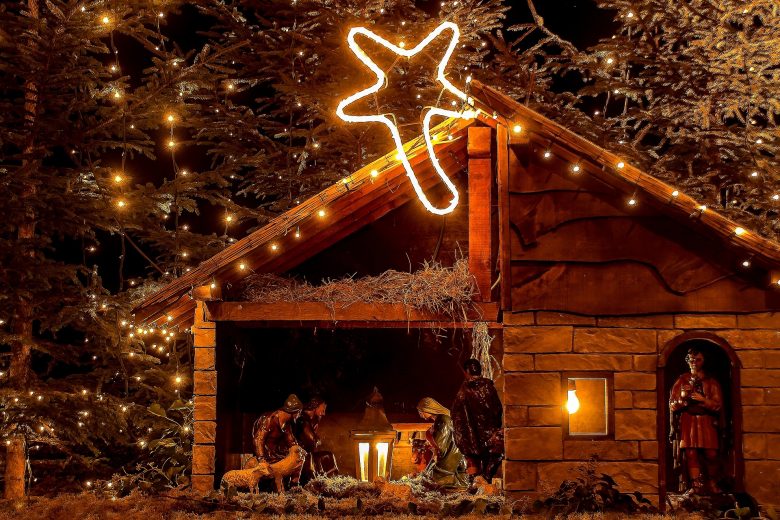
Heraklion – Crete
Heraklion, being the largest city of Crete, is also the most vibrant one. The heart of the events take place at Eleftherias Square where a Christmas Market unites all those who want to feel as if they are in Santa’s village. With wooden houses full of Christmas ornaments, decorations, and treats, the locals get lost in the glamor and festive spirit. While eating their famous bougatsa, they go through all the options and select the very best to gift to their loved ones.
Traditionally, many practitioners of the Greek Orthodox religion, wish to celebrate the birth of Christ with a time of preparation. They first cleanse their souls and bodies by fasting from any meat and by-products, forty days before Christmas Day. November 15th is the day when the fasting starts as do the services and liturgical commemorations. The most important ones take place on the Eve of the Nativity at the town Cathedral and the liturgical services are divided into three parts.
First, The Hours. The Hours are particular Psalms, hymns, and biblical readings that describe every hour the happiness of Christ’s Coming. Second, are the Vespers. The Vespers follow The Hours and are eight biblical readings that are about the prophecies that Christ will fulfill in his Kingdom. Third, The Liturgy of St. Basil. The Liturgy of St. Basil used to be a baptismal liturgy at which catechumens were baptized, and integrated into the Church. Finally, on the day of the Nativity of Christ, there is a joyous celebration with the Liturgy praising Christ.
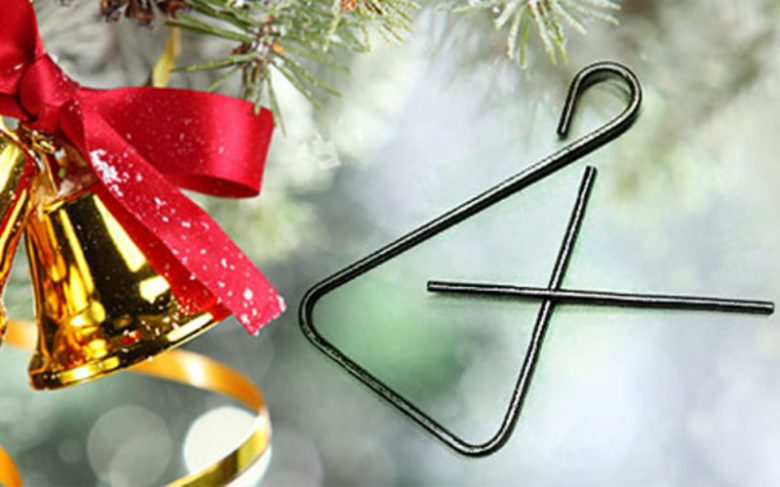
Agios Nikolaos – Crete
In the small seaside town of Agios Nikolaos, every Christmas they celebrate by decorating their docked boats creating a magical feel as the lights mirror the water turning the town into a 3D fairytale. Furthermore, Christmas music flows all across the town making the locals walk to the melody of the carols while they admire the vibrant window displays of the shops. Lighting up the city’s Christmas tree located at the main square gives them additional joy as they feel loved and that they are a part of a bigger family.
The children all over Greece all wait for the morning Christmas Eve, as the tradition is for them to go caroling. Usually, they form small groups and early in the morning they head out all around their neighborhood, to houses and shops to sing the special Christmas Eve carol to whoever answers the door. They start by knocking on the door and asking the owner if they can sing the carol. The owner always answers positively, and the children with their triangles, guitars, accordions, lyres, or harmonicas, sing the carol. Once they finish, they wish the owner a Merry Christmas and in return, the owner rewards them with a certain amount of money. However, in the past, the owners offered them traditional Christmas sweets, such as „melomakarona“ or „kourabiedes“.
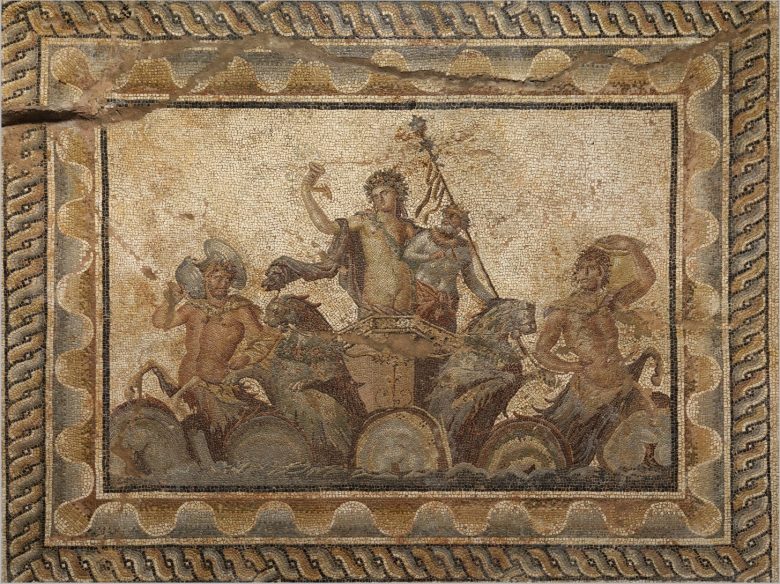
Christmas Carols and Traditions in Ancient Greece
The word carol comes from the Latin „calenda“, which means the beginning of the month. It is believed that their history goes very deep into the past and is associated with Ancient Greece. In fact, they found ancient written pieces similar to today’s carols (called Ierosini in antiquity). The children of that time held a model of a ship that represented the coming of the god Dionysus. Sometimes they held an olive or laurel branch on which they hung red and white threads. The housewives tied the offerings to threads and let them hang on their doors for the rest of the year.
The Ancient Greeks celebrated the birth of the “divine child” Dionysus also in December (on the 30th). The priests of the God, a Mycenean God, as we know now (di-wo-nu-so), carried a pastoral staff during the sacred rituals. They also decorated his temples with trees. The trees were offered as a sacred offering to the divine child and his rebirth was celebrated every year.
Dionysus as the God of Light and Illumination in this aspect. appeared also with a flying chariot. His chariot was believed to be transformed into a sleigh with flying horses, thus bringing light to the world through his „epiphany“.
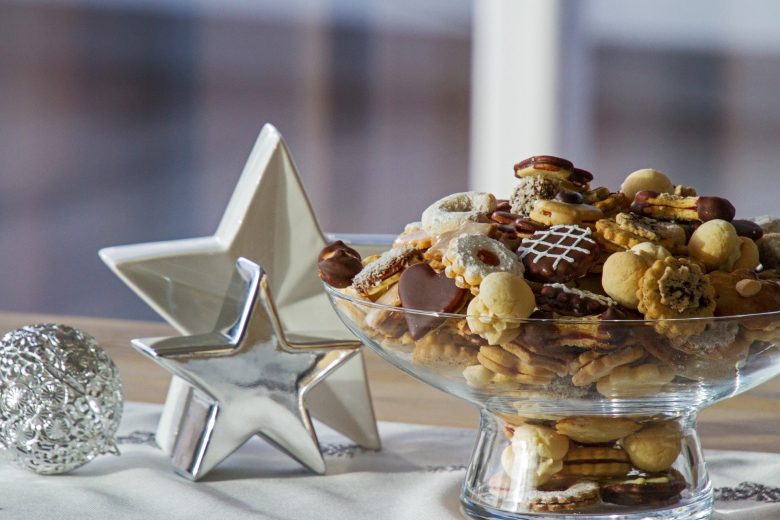
Holiday Traditional Dishes in Crete
Christmas Sweets in Crete
Traditional national Christmas sweets are extremely important in a household during the Christmas season. Two traditional sweets are always made by the housewife always passing on the secrets of the recipes to her children who help her. The two sweets are „melomakarona“ and „kourabiedes„. In the past, melomakarona were exclusively a Christmas treat and “kourabiedes” for the New Year. Today, however, this distinction does not happen and the Cretans make both sweets at the same time.
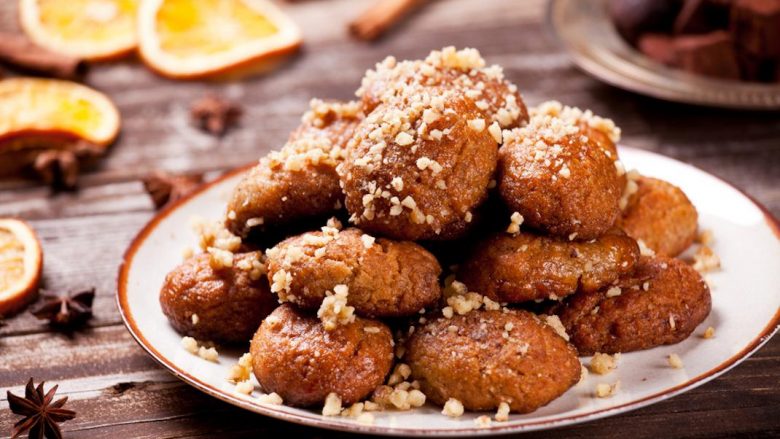
Melomakarona
Melomakarona fills the houses with the sweet aroma of cinnamon and is loved by everyone. Nevertheless, the origin of the word is slightly darker than anticipated. The etymology of the melomakarono is from the words: honey and macaroni. If we dive deeper into the etymology of the Greek word „macaroni“ we will observe that it derives from the ancient Greek word „makaria“ which was a „psychopita“, a piece of bread in the shape of a melomakarono which was offered after funerals. However, in recent times people dipped the melomakarono in honey and for that reason, the word „meli“ was added. Its main ingredients are flour, semolina, sugar, orange zest or juice, oil, honey, brandy, cinnamon, and other herbs. In addition, melomakarona is now a symbol of happiness and abundance. After all, honey since ancient times is a symbol of fertility and well-being.
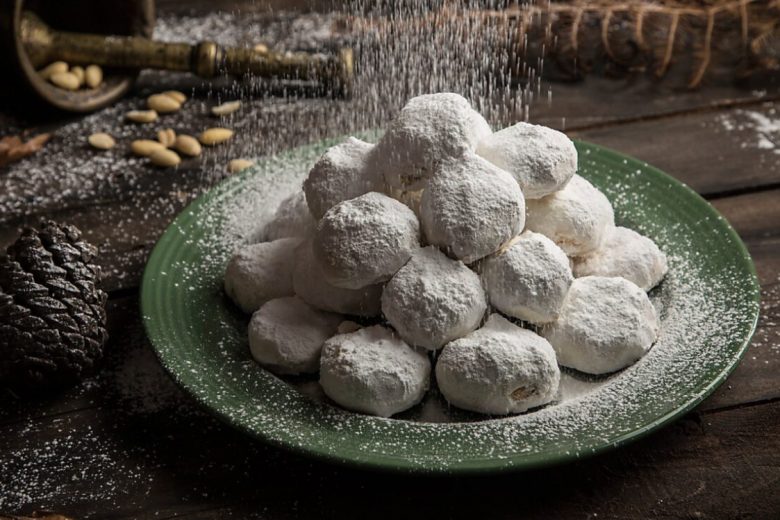
Kourabiedes
Kourabiedes got its name from the Turkish „Kurabiye“, but the roots of the word are Arabic. In essence, it is a dessert made of flour, butter, and powdered sugar. Although it has almonds, it is nutritionally inferior to melomakarono. Nonetheless, it still remains a significant adversary in the Christmas tradition. As a Christmas custom, kourabies has been with us for many years, but not as much as melomakarona. The strong proof is the loss of the word, from the dictionaries of Byzantium. The first reference is made to a text by Roidis where an old man recalls the chocolate cakes during the time of Otto.
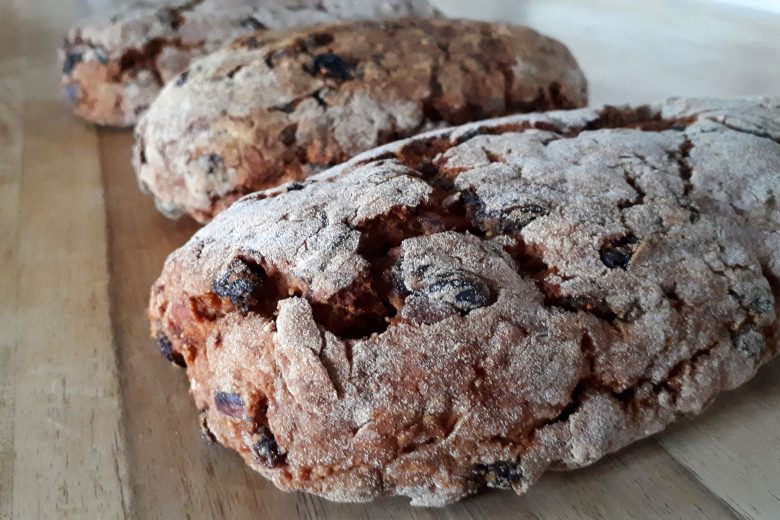
Blessed Christmas Bread in Crete
In Crete, people also make the Christmas Bread and with parts of the dough, they make a cross. In the center, they place a white nut or an egg, symbolizing fertility. The blessed Christmas bread is on the Christmas table, as it will support the life of the householder and his family. They cut it on Christmas day, giving many wishes.
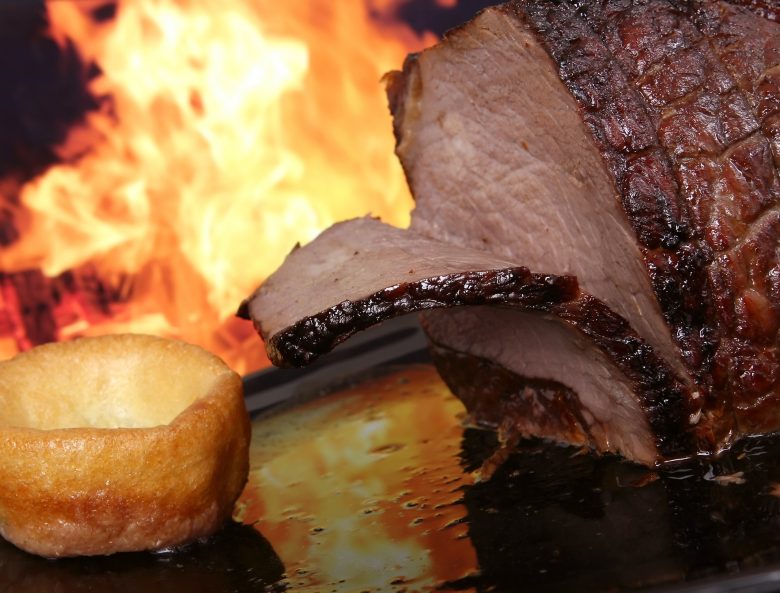
Christmas Pork Dishes in Crete
The folklorist Costas Karapatakis in his book „The Twelve Days, old Christmas customs and traditions“ mentions that the Romans sacrificed pigs to the gods Demeter and Cronus to favor them in cultivating the land. This happened during the period from December 17-25, i.e. the period during which they traditionally slaughtered the animals.
In Crete, it used to be customary for every family in the village to raise a pig. On Christmas Eve they slaughtered the pig and it was the main Christmas dish. On the second day of Christmas, the villagers cut the pork and made several local dishes out of the pork such as sausages, apaki, tsiladia, siglina, omathia, and tsigarides.
The Christmas pig was the main source of meat for several weeks. Of course, we are referring to a diet extremely poor in meat, the famous Cretan diet (Mediterranean Diet), which gifted the Cretans health and longevity.
Nothing went to waste from the Christmas pig, as each piece of the animal was useful. For instance, its bladder. They washed, cleaned, inflated it, and turned it into a ball. It was a valuable gift for the children of that time.
Don’t hesitate to reach us and Create Your Own Experience in Crete this Christmas!
We look forward to hosting you as our Guests!
